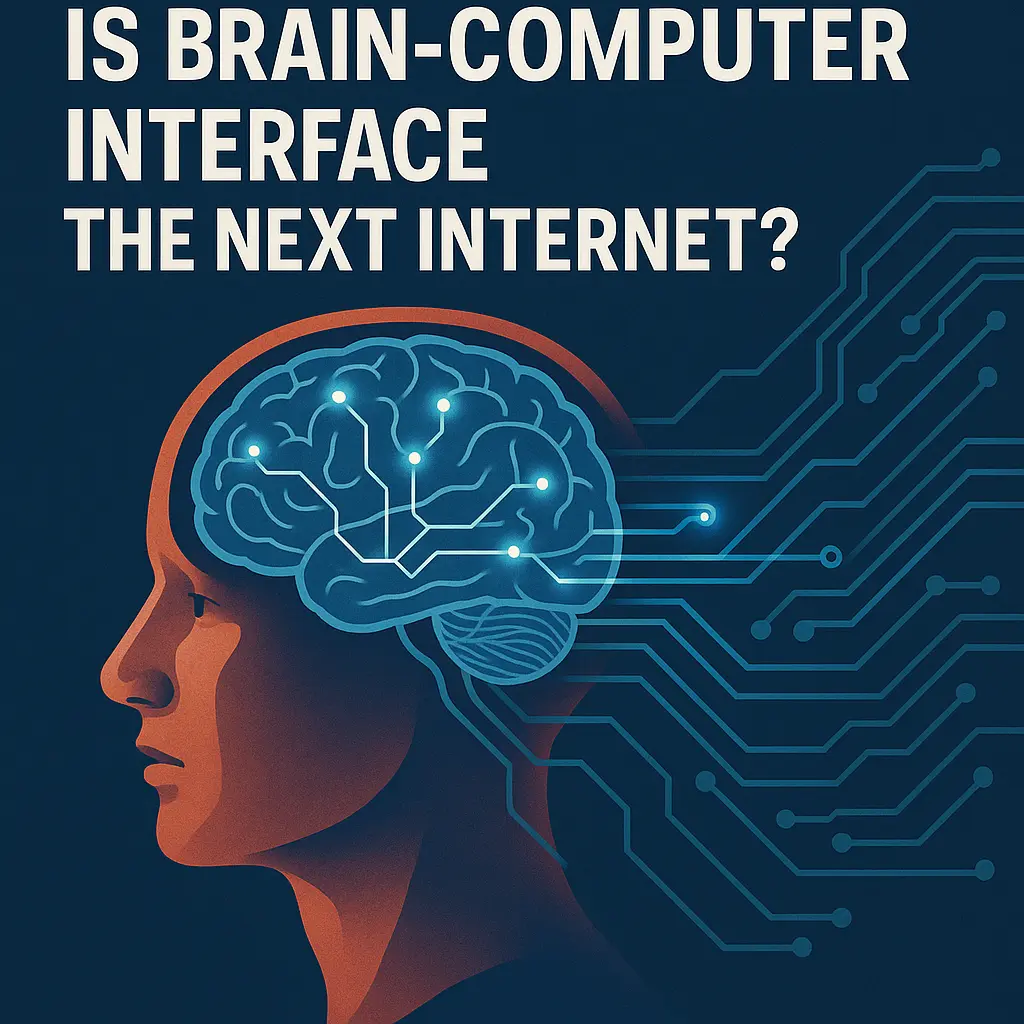Introduction: The Dawn of a New Digital Revolution
Humanity is always on the verge of technological breakthroughs. From the invention of electricity to the rise of the internet, innovation continually reshapes society. Now, one emerging technology promises to redefine our very relationship with machines—the Brain-Computer Interface (BCI). But the real question many are beginning to ask is: Is Brain-Computer Interface the Next Internet?
Understanding Brain-Computer Interfaces (BCIs)
Brain-Computer Interfaces, or BCIs, enable direct communication between the human brain and digital devices. By decoding brain signals and converting them into actionable commands, BCIs allow users to interact with technology through thought alone. Initially designed for medical purposes, these interfaces have rapidly expanded beyond healthcare into broader consumer and industrial applications.
Types of Brain-Computer Interfaces
There are two primary types of BCIs:
-
Invasive BCIs: Directly implanted into the brain, providing accurate and high-resolution signals.
-
Non-invasive BCIs: External devices that read brain signals through the scalp, like EEG-based headsets.
Both types offer unique benefits and challenges, but invasive BCIs, despite their complexities, offer the greatest potential for precise control and interaction.
Why Brain-Computer Interfaces Might Be the Next Internet
The internet transformed the way we connect, communicate, and access information. Similarly, Brain-Computer Interfaces have the potential to radically alter how we interact with devices, connect with each other, and even how we perceive reality itself.
Instantaneous Communication and Interaction
Imagine sending messages instantly with just your thoughts or controlling your home environment effortlessly without lifting a finger. BCIs might make traditional methods of communication, including smartphones and keyboards, obsolete.
Enhanced Human Capabilities
BCIs could amplify human cognitive abilities. By integrating artificial intelligence (AI) and BCIs, people could access vast amounts of data instantly, enhance memory recall, and dramatically improve learning speeds.
Democratization of Technology
The internet democratized information access; similarly, BCIs might democratize physical and cognitive abilities. People with disabilities could regain mobility and independence, dramatically enhancing their quality of life.
Real-world Applications of Brain-Computer Interfaces Today
While much of the potential of BCIs remains speculative, several existing applications already showcase their transformative power:
Healthcare and Medical Innovations
-
Restoration of Mobility: BCIs help paralyzed patients control robotic limbs or wheelchairs using only their thoughts.
-
Neuroprosthetics: Replacing or restoring sensory functions like hearing or sight with brain-controlled implants.
Mental Health and Cognitive Disorders
-
Depression and Anxiety Treatment: BCIs could regulate mood and emotions by directly interacting with neural pathways.
-
Memory Enhancement: Alzheimer’s and dementia patients may benefit significantly from memory-assistive BCIs.
Virtual Reality and Gaming
-
BCIs offer immersive experiences, allowing gamers to interact naturally within virtual worlds using only their brains.
Challenges in BCI Technology
While BCIs have immense potential, the path to mainstream adoption faces significant hurdles:
Technological Limitations
Non-invasive BCIs often face issues related to signal noise, latency, and accuracy. Meanwhile, invasive BCIs, though precise, involve high risks such as infections, brain tissue damage, or rejection.
Ethical and Privacy Concerns
Ethical questions surrounding the potential misuse of BCIs are serious and multifaceted. Concerns over data privacy, neural surveillance, and loss of cognitive autonomy raise critical ethical debates that must be addressed before mainstream adoption.
Accessibility and Affordability
As with early internet technology, high initial costs and limited accessibility are significant barriers. Ensuring widespread availability and affordability will be key to making BCIs as transformative as the internet.
How Close Are We to the Mass Adoption of BCIs?
Currently, companies like Neuralink, founded by Elon Musk, Kernel, and Facebook Reality Labs, are aggressively investing in developing BCIs. Neuralink’s demonstrations have already captured global attention, but mass adoption could still be a decade or more away.
However, technological advancement in neuroengineering, machine learning, and miniaturization of electronics continually accelerates this timeline.
The Internet vs. BCI: Drawing Parallels
When the internet emerged, it rapidly connected people globally, fundamentally altering communication, commerce, and society. BCIs might repeat this historical pattern, facilitating new forms of interaction and creating entirely new markets.
Just as the internet evolved from simple HTML pages to sophisticated cloud-based infrastructures, BCIs could evolve from simple thought-to-text interfaces to complex neural networks integrated into our daily lives.
Similarities with Internet Evolution
-
Both started with limited applications and rapidly expanded.
-
Early skepticism gave way to global adoption.
-
Significant ethical and privacy concerns emerged.
-
Continuous innovation made previously unimaginable scenarios possible.
Could BCIs Really Replace the Internet?
While it’s tempting to envision BCIs replacing the internet entirely, it’s more accurate to view BCIs as the internet’s next evolutionary stage. Instead of replacement, BCIs might integrate deeply with the existing digital infrastructure, creating a richer, more seamless technological ecosystem.
BCIs could enhance rather than replace the internet, providing intuitive, human-centric interaction methods.
Preparing for a BCI-Driven Future
To harness the full potential of Brain-Computer Interfaces, proactive approaches are essential:
-
Regulatory Frameworks: Developing comprehensive laws and guidelines addressing ethical, privacy, and security concerns.
-
Education and Training: Preparing society for a future in which BCIs are commonplace through education and awareness.
-
Research and Collaboration: Encouraging international collaboration in neurotech research, ensuring equitable access and adoption worldwide.
Conclusion: Is Brain-Computer Interface the Next Internet?
BCIs indeed have the potential to be as revolutionary as the internet. However, significant challenges—ethical, technological, and societal—must be overcome. BCIs promise a future of seamless human-machine interactions, enhanced cognitive capabilities, and profound societal transformation.
Yet, much like the early days of the internet, the full potential of BCIs remains uncertain and open to exploration. Whether or not Brain-Computer Interfaces become the “next internet,” they undeniably represent one of the most exciting frontiers in human technological advancement.
In answering the question—Is Brain-Computer Interface the Next Internet?—the answer leans towards yes. However, the scale, scope, and nature of their influence depend on how humanity chooses to embrace and regulate this powerful new frontier.

1 thought on “Is Brain-Computer Interface the Next Internet?”